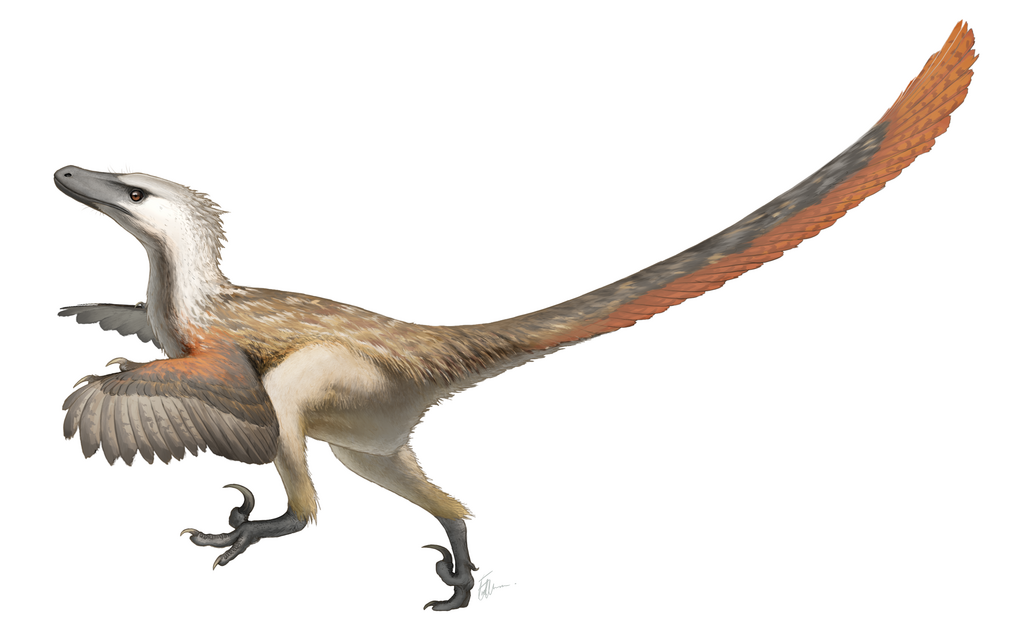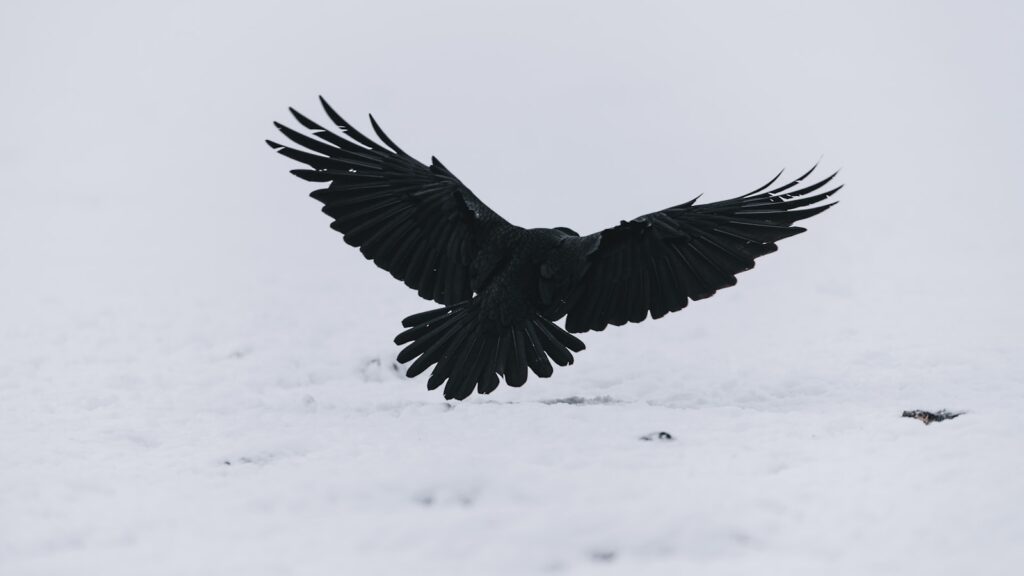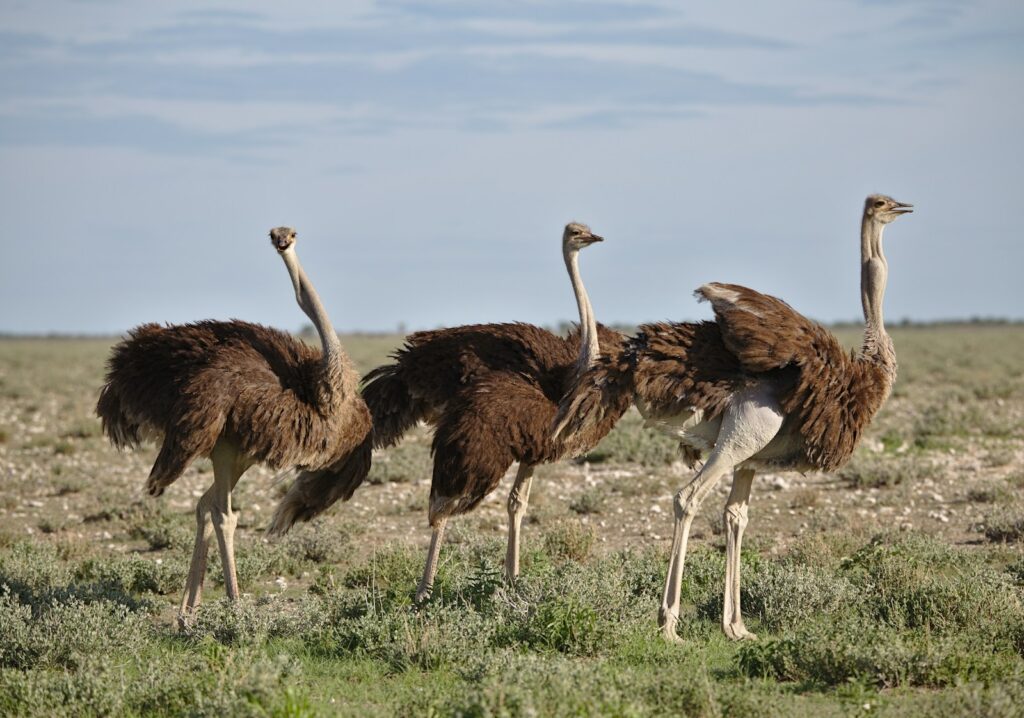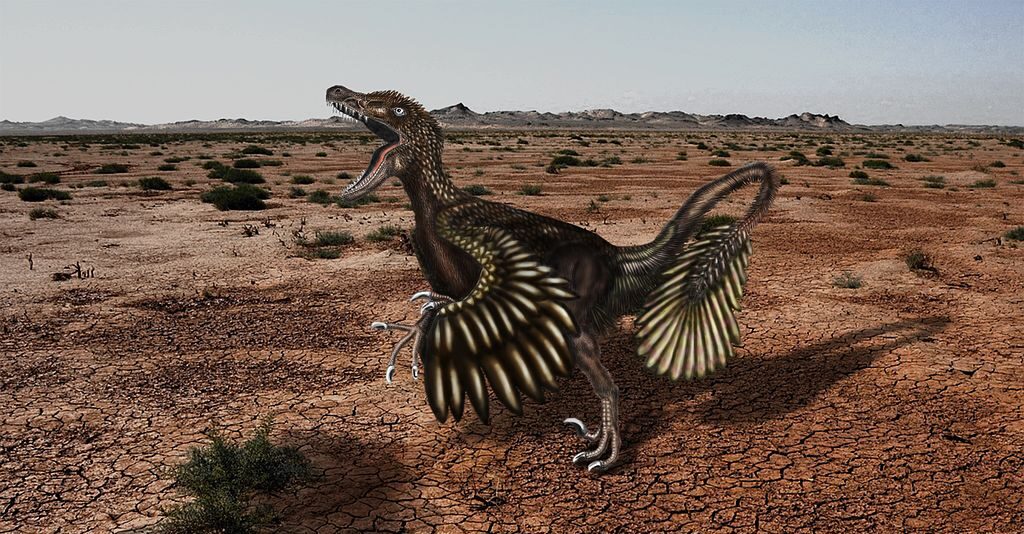The iconic image of raptors as earth-bound, speedy predators has dominated both scientific literature and popular culture for decades. However, recent paleontological discoveries and innovative research techniques have prompted some scientists to reconsider whether these fearsome dinosaurs might have possessed limited flight capabilities. This controversial hypothesis has ignited passionate debates within the paleontological community, challenging long-held assumptions about raptor anatomy, behavior, and evolutionary development. By examining fossil evidence, comparing skeletal structures to modern birds, and applying biomechanical analysis, researchers are piecing together a more nuanced understanding of these fascinating prehistoric predators that may forever change how we envision them.
Defining Raptors: Who Are We Talking About?

When discussing “raptors” in paleontological contexts, scientists are specifically referring to dromaeosaurids, a family of feathered, sickle-clawed theropod dinosaurs that lived during the Cretaceous period approximately 145-66 million years ago. This group includes the familiar Velociraptor, Deinonychus, and Microraptor, among others. It’s important to distinguish these prehistoric raptors from modern raptorial birds like eagles and hawks, though both share the name due to their predatory nature. Dromaeosaurids ranged dramatically in size, from turkey-sized Velociraptor to the larger Utahraptor, which could reach over 20 feet in length. Understanding exactly which species fall under this classification provides crucial context for evaluating their potential flight capabilities, as smaller species would have had distinct advantages in becoming airborne compared to their larger relatives.
The Evolutionary Link Between Dinosaurs and Birds

The connection between dinosaurs and modern birds represents one of paleontology’s most fascinating evolutionary narratives. Raptors occupy a particularly significant position in this story, as they share numerous anatomical features with early birds. Both groups possessed feathers, hollow bones, and fusion of certain skeletal elements that would later prove advantageous for flight. This evolutionary relationship wasn’t always accepted – when proposed by Thomas Henry Huxley in the 1860s, the dinosaur-bird connection faced significant skepticism. However, discoveries like the feathered Archaeopteryx in 1861 and numerous feathered dinosaur fossils from China’s Liaoning Province in the 1990s solidified this connection. Modern paleontologists now widely recognize that birds are living dinosaurs, having evolved from small, feathered theropods. This evolutionary context makes questions about raptor flight capabilities particularly meaningful, as they may represent transitional forms in the development of true avian flight.
The Microraptor Discovery: A Game-Changer

The unearthing of Microraptor fossils in the early 2000s dramatically transformed the scientific understanding of raptor capabilities. This crow-sized dromaeosaurid, dating back approximately 120 million years, possessed an astonishing feature: four wings. Unlike any modern bird, the Microraptor had long flight feathers not only on its arms but also on its legs, creating what researchers refer to as a “four-winged” configuration. Remarkably well-preserved fossils clearly show asymmetrical flight feathers identical to those used by modern birds for powered flight. Multiple specimens have been recovered with their feathers intact, allowing scientists to analyze their structure at the microscopic level. Studies led by paleontologist Xu Xing demonstrated that the Microraptor could have been capable of gliding or even limited powered flight, challenging previous assumptions about raptor locomotion. This discovery opened the possibility that flight capabilities might have evolved in dinosaurs multiple times before culminating in the fully developed flight seen in modern birds.
Feathers: More Than Just Insulation

The presence of feathers on raptor dinosaurs initially puzzled scientists, who first hypothesized they served primarily for temperature regulation. However, continued fossil discoveries have revealed increasingly sophisticated feather structures that suggest additional functions. Many raptor species possessed pennaceous feathers – those with a central shaft and barbs forming a flat vane – identical to those used by modern birds for flight. Remarkably, some fossils even preserve evidence of melanosomes, cellular structures that indicate original feather coloration, suggesting these feathers may have also played roles in display or camouflage. Some raptors, including Velociraptor, show evidence of quill knobs on their forearm bones – attachment points for substantial wing feathers that could support aerodynamic functions. Rather than simple downy coverings, these complex feather arrangements suggest selection pressure for features useful in activities like balance, maneuverability, or possibly gliding or flight. The evolution of these sophisticated structures strongly indicates they served purposes beyond mere insulation, potentially including early forms of aerial locomotion.
Skeletal Adaptations That Suggest Flight Potential

Several skeletal characteristics shared between raptors and flying birds point toward possible flight capabilities in these dinosaurs. Many raptor species possessed hollow, pneumatic bones – air-filled cavities that significantly reduced weight while maintaining structural integrity, a crucial adaptation for flight. The furcula (wishbone), an important component of a bird’s flight apparatus that stores and releases energy during wing beats, appears in numerous raptor species. Additionally, some dromaeosaurids had semilunate carpals, specialized wrist bones that allowed for the folding of feathered forelimbs against the body, precisely as seen in modern birds. Perhaps most telling is the presence of an enlarged sternum (breastbone) in certain species, providing attachment points for flight muscles. The shoulder girdle in many raptors also shows adaptations reminiscent of flying birds, with a scapula and coracoid arranged to support wing movements. While no single feature definitively proves flight capability, this constellation of adaptations strongly suggests that at least some raptor species possessed the anatomical foundations necessary for some form of aerial locomotion.
The Biomechanics Debate: Could They Generate Lift?

The question of whether raptors could generate sufficient lift for flight has prompted rigorous biomechanical analysis and computer modeling. Scientists like Dr. Michael Habib of the University of Southern California have conducted studies comparing the wing loading (ratio of weight to wing area) and muscle attachments of various raptor species to both modern birds and theoretical models. For smaller dromaeosaurids like the Microraptor, calculations suggest they possessed favorable wing-loading ratios that could have supported gliding or limited powered flight. Larger species like Velociraptor present more challenges, though some researchers propose they might have utilized a “wing-assisted incline running” technique similar to modern ground birds, using their wings to help climb steep surfaces or trees. Computer simulations examining air flow patterns over reconstructed raptor wings indicate that even if full powered flight wasn’t possible, the aerodynamic forces generated could have enhanced jumping distance, provided stability during runs, or facilitated controlled descent from heights. The debate continues because fossil evidence cannot directly demonstrate muscle mass or strength, leaving researchers to make educated estimates based on bone structure and modern analogs.
The “Trees Down” vs. “Ground Up” Flight Evolution Theories

The question of how flight evolved in dinosaurs has divided paleontologists into two major camps, each with implications for raptor flight capabilities. The “trees down” theory proposes that flight evolved in tree-dwelling ancestors who developed gliding adaptations that eventually led to powered flight. This model suggests that some raptors might represent transitional forms that used their feathered limbs to glide between trees or slow their descent from heights. Conversely, the “ground up” theory argues that ground-dwelling dinosaurs developed feathered forearms for other purposes – perhaps to aid in capturing prey or for display – which were later co-opted for flight as they began to flap these limbs. Under this model, raptors might demonstrate the early stages of this process, using wing-assisted movements to enhance their predatory abilities. Evidence for both theories exists, with the Microraptor seeming to support the “trees down” approach while other raptor species align better with “ground up” expectations. Many scientists now favor a hybrid model, recognizing that flight evolution likely involved complex stages that incorporated elements of both theories, with raptors representing different experiments along this evolutionary pathway.
Size Matters: The Scaling Challenge for Larger Raptors

The relationship between body size and flight potential presents one of the most significant challenges to the flying raptor hypothesis, particularly for larger species. Flight capabilities are heavily constrained by scaling principles – as an animal increases in size, its weight increases as a cube function while wing area increases only as a square function. This means that larger animals require disproportionately more power to generate sufficient lift relative to their body weight. While the chicken-sized Microraptor likely possessed favorable mass-to-wing ratios, medium-sized raptors like the Velociraptor (approximately 15-33 pounds) would have faced considerably greater aerodynamic challenges. The largest dromaeosaurids, like the Utahraptor (estimated at over 1,000 pounds), almost certainly could not fly using any currently understood biomechanical principles. This scaling problem leads many paleontologists to propose that flight capabilities were likely limited to the smallest raptor species, with medium-sized species perhaps capable only of assisted gliding or short flapping bursts. The flying ability of raptors, if it existed, would have diminished as species grew larger through evolution, potentially explaining why different species show varying degrees of flight-compatible adaptations.
The “Wing-Assisted Incline Running” Hypothesis

One of the most intriguing theories regarding raptor locomotion centers on a behavior observed in many modern ground birds called wing-assisted incline running (WAIR). This technique, studied extensively in species like chickens and quail, involves flapping the wings to generate a downward thrust while running up steep inclines or vertical surfaces. The force created helps push the bird against the surface, increasing traction and allowing it to ascend slopes that would otherwise be impossible. Several studies, including work by Dr. Kenneth Dial at the University of Montana, suggest that similar behaviors might have been possible in raptors based on their wing structure and musculature attachments. Evidence of asymmetrical flight feathers in fossils like Velociraptor mongoliensis supports this hypothesis, as these feathers would have improved the aerodynamic efficiency of such movements. If raptors employed WAIR, it would represent an intermediate locomotor adaptation between purely terrestrial movement and true flight, potentially explaining why they maintained elaborate wing structures even if they weren’t fully airborne predators. This behavior might have proven particularly valuable for hunting, allowing raptors to rapidly ascend trees or cliffs to capture prey or escape larger predators.
The Relevance of Modern Flightless Birds

Modern flightless birds like ostriches and emus offer valuable insights into the evolutionary pathways that might have influenced raptor capabilities. These contemporary species descended from flying ancestors but lost flight ability through evolutionary processes, often retaining vestigial wings and flight-related anatomical features. Examining the skeletal structure of flightless birds reveals how flight adaptations can be repurposed for other functions – ostriches, for instance, use their wings for balance and display behaviors despite being unable to fly. Similarly, raptors might have utilized partially flight-capable anatomies for purposes beyond aerial locomotion, such as display, balance, or prey capture. The evolutionary trajectory of modern ratites (the group containing ostriches and emus) demonstrates that the transition between flying and non-flying states isn’t necessarily unidirectional. This observation supports the possibility that various raptor species might have occupied different points along a spectrum of flight capability, with some lineages developing toward flight while others moved away from it. By comparing raptor fossils with both flying and flightless modern birds, paleontologists can better contextualize the anatomical features that indicate potential flight capabilities.
Interpreting the Fossil Record’s Limitations

The fossil record, though invaluable, presents significant challenges for definitively resolving questions about raptor flight capabilities. Fossilization inherently favors hard tissues like bones while rarely preserving soft tissues such as muscles, tendons, and complete feather structures that would be crucial for determining flight potential. Even exceptionally preserved specimens typically represent only a small window into an animal’s total anatomy and provide no direct evidence of behavior. Sample sizes for most raptor species remain relatively small, making it difficult to distinguish individual variation from species-wide traits. Additionally, the process of fossilization often results in compression and distortion of remains, complicating accurate measurements and reconstructions of flight-relevant features like wing area and body mass. Time gaps in the fossil record mean scientists must often infer evolutionary transitions between known specimens, creating uncertainty about the precise pathway of flight-related adaptations. These limitations explain why the question of raptor flight remains contested despite decades of research. Scientists must rely on comparative anatomy, biomechanical principles, and reasonable inferences to build their case either for or against the flying raptor hypothesis.
Recent Technological Advances Shedding New Light

Cutting-edge technologies are revolutionizing how paleontologists evaluate the flight potential of raptors. Advanced CT scanning techniques now allow researchers to examine internal bone structures non-destructively, revealing previously inaccessible details about bone density, air spaces, and growth patterns that provide clues about flight adaptations. Scanning electron microscopy has enabled detailed analysis of feather microstructures in exceptionally preserved fossils, confirming that many raptor feathers had the same asymmetrical vane structure critical for generating lift in modern birds. Perhaps most transformative has been the application of computational fluid dynamics (CFD) to test theoretical flight models, with researchers creating digital reconstructions of raptor bodies and wings to simulate airflow patterns and potential aerodynamic performance. Laser-stimulated fluorescence imaging has revealed soft tissue impressions not visible under normal light, providing a better understanding of wing membrane extent and body contours relevant to flight calculations. These technological innovations have significantly refined scientific estimates of raptor weight, wing loading, and potential flight styles. While technology alone cannot definitively settle the debate, these tools have moved the discussion from purely speculative to increasingly evidence-based, with several recent studies using these methods suggesting at least limited flight capabilities in smaller raptor species.
The Ecological Implications of Flying Raptors

If some raptors could indeed fly or glide, this capability would fundamentally alter our understanding of Mesozoic ecosystems and predator-prey dynamics. Flying or gliding raptors would have occupied different ecological niches than purely terrestrial predators, potentially hunting arboreal prey or utilizing three-dimensional hunting strategies inaccessible to ground-bound carnivores. Such capabilities might explain the remarkable evolutionary success of dromaeosaurids, which persisted for over 70 million years across multiple continents. Flight-capable raptors would have influenced the evolution of contemporary prey species, potentially driving the development of defensive adaptations against attacks from above. From a competitive standpoint, flying raptors would have occupied intermediate ecological positions between fully terrestrial predators and specialized aerial hunters like pterosaurs, perhaps explaining certain patterns of species distribution in the fossil record. Evidence of tree-dwelling adaptations in some raptor species supports this ecological interpretation, suggesting they may have used flight capabilities to navigate forested environments. Understanding raptors as potentially aerial or semi-aerial predators requires paleontologists to reconsider existing ecological models of prehistoric environments, potentially revealing more complex and stratified ecosystems than previously recognized.
Why This Debate Matters Beyond Paleontology

The question of whether raptors could fly extends far beyond academic paleontology, influencing fields ranging from evolutionary biology to aerospace engineering. This research provides crucial insights into the evolution of flight as a biological adaptation, potentially revealing multiple independent pathways to aerial locomotion throughout evolutionary history. Understanding how different body plans might achieve flight capabilities has practical applications in biomimetic engineering, where natural designs inspire human technologies. The debate also highlights the methodological challenges of interpreting the past from incomplete evidence, serving as a case study in scientific reasoning and the proper application of comparative analysis. For conservation biology, understanding the evolutionary development of flight provides context for protecting modern bird diversity by recognizing the ancient lineages they represent. Perhaps most significantly, research on raptor flight capabilities demonstrates how scientific understanding continuously evolves with new evidence and analytical approaches, challenging us to revise even our most established concepts of prehistoric life. The flying raptor hypothesis fundamentally changes our perception of these animals from the ground-bound predators popularized in films to potentially more complex, multi-terrain hunters that utilized a broader range of ecological strategies than previously imagined.
Conclusion

The debate over raptor flight capabilities remains one of paleontology’s most fascinating unresolved questions. While conclusive evidence continues to elude researchers, the growing body of anatomical, biomechanical, and comparative evidence suggests that at least some smaller raptor species possessed limited flight or gliding abilities. Larger species likely remained primarily terrestrial but may have utilized their feathere




